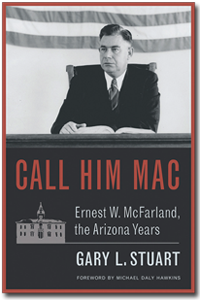“Race” is a word. A word widely misunderstood, absurdly political, sadly misused, and too often applied out of context. The ethics of “race” are misunderstood, politicized, ignored, and shunted off stage by the politics of race. And as though it were icing on a badly baked cake, it is a written word that challenges every writer in all genres and literary themes. This single blog will not cure the ills of misusing the word “race,” or intentionally using it to divide and conquer, as is the wont of American politics today. My narrow goal here today is to challenge fellow writers to think about “race” in primeval terms, in context, and ethically.
Primeval = of or resembling the earliest ages in the history of the world.
Context = the circumstances that form the setting for using the word “race” so that it can be fully understood and assessed.
Ethics = the moral principles that govern a writer’s words, submissions, purpose, product, and how we conduct ourselves in publishing what we write.
Madame Wikipedia says race is a categorization of humans based on shared physical or social qualities into groups generally viewed as distinct within a given society. The term came into common usage during the 16th century, when it was used to refer to groups of various kinds, including those characterized by close kinship relations.[1]
Is Madame Wikipedia right? Does she define race in context? Does she include morals, ethics, good manners, safe harboring, or the politics of the thing cavalierly called “race?” I say cavalierly because at second glance, she shows a lack of care about something central to human relationships and human outcomes. Is race just a matter of categorizing humans? Is it based on both shared physical and social qualities? Shouldn’t those be separately assessed so race can be understood in context? When we write or assign that troublesome word to another human being or to his/hers/theirs/our race, should we take care? Edit? Reflect? Challenge ourselves to ensure we have the right word?
And isn’t it important to think about the feelings we might generate with our words? And for the sole purpose of complicating an intensely complicated reality, shouldn’t writers research the word before using it in ways that will do more harm than good, insult rather than include, and minimize instead of focusing attention on how many millions of humans are harmed by simply assigning one “race” or another to them?
There is a lengthy, excellent, captivating, mind-boggling treatment of three interlocking words—Race, Ethnicity, and Society. It is an encyclopedia, 1,752 pages in length, weighing 13.01 pounds, and for sale by Sage Publications, Inc. on Amazon in hardcover for $665.99 or on Kindle at $422.40.[2] Booklist reviewed it. “This substantial set covers the complex topics of its title and is mainly focused on the U.S. Its nearly 600 entries are contributed by close to 400 scholars from all over the world. The alphabetically arranged entries cover a plethora of topics from a multidisciplinary perspective and may be concerned with economics, politics, law, religion, social welfare, media, entertainment, or sports. There are also biographical and conceptual entries—for example, Frantz Fanon, Abraham Lincoln, Ethnocentrism, Gerrymandering, Ghetto, and Stereotypes are all treated. Notable court cases merit their own entries, as do selected ethnic groups and countries. Issues of gender, class, age, and sexual orientation are also included.”
The National Institutes of Health has looked deeply into “race” and argues “We Should Abandon ‘Race’ as a Biological Category in Biomedical Research.”[3] Their reasoning is surprisingly elementary; even writers with little or no science background can understand it. “In 2019, the American Association of Physical Anthropologists issued a statement on biological aspects of race, concluding that “pure races, in the sense of genetically homogenous populations, do not exist in the human species today, nor is there any evidence that they have ever existed in the past.” The statement continues: “… The only living species in the human family, Homo sapiens, has become a highly diversified global array of populations. The geographic pattern of genetic variation within this array is complex and presents no major discontinuity. Humanity cannot be classified into discrete geographic categories with absolute boundaries… Partly as a result of gene flow, the hereditary characteristics of human populations are in a state of perpetual flux. Distinctive local populations are continually coming into and passing out of existence.”
The reason why scientists, much less writers, cannot define race biologically is because we are not divisible into one race or another. And the proof of the pudding is that human variation will not stand still. Remember Charles Darwin? He told us that almost two centuries ago. Neanderthal thinking abounds when governments insist on identifying people by racial groups. Just to make sure the American Neanderthal gets it, you can’t define race by bone measurements or genetics. Neanderthal DNA does exist. Discovermagazine.com says East Asians have a tiny bit in their genomes—comprising about 0.3 percent of their genome. And they also say everyone on the planet has a little Neanderthal in them.[4]
Notwithstanding good science and common sense, governments everywhere use “race” for good, bad, and evil. The U.S. Census Bureau identifies, estimates, and jabbers on about race ignoring science and DNA writ large. They freely admit race data used is not based on biology, anthropology, or genetics. It is, they insist, based on a social definition. It uses “race” data guidelines from the Office of Management and Budget. The OMB requires five minimum categories. (1) White. (2) Black or African American. (3) American Indian or Alaska Native. (4) Asian. (5) Native Hawaiian or Other Pacific Islander.[5] And, perhaps to explain the inexplicable, the Census Bureau says OMB permits it to use a sixth category—“Some Other Race—Respondents may report more than one race.”
The Census Bureau and the OMB are not political posturers; they are bureaucratic federal agencies. They do not make policy; they serve it. The CB explains the genesis of its data. “. . . these data are based on self-identification. The racial categories included in the census questionnaire generally reflect a social definition of race recognized in this country and not an attempt to define race biologically, anthropologically, or genetically. In addition, it is recognized that the categories of the race item include racial and national origin or sociocultural groups. People may choose to report more than one race to indicate their racial mixture, such as ‘American Indian’ and ‘White.’ People who identify their origin as Hispanic, Latino, or Spanish may be of any race.”
As qualified by government speak and the ignorance and historical bias, the word “race” is nonetheless generalized. White is the designation for persons having origins in any of the original peoples of Europe, the Middle East, or North Africa. It includes people who indicate their race as “White” or report responses such as German, Irish, English, Italian, Lebanese, and Egyptian. The category also includes groups such as Polish, French, Iranian, Slavic, Cajun, Chaldean, etc.
They say Black or African American is the designation for persons having origins in any of the Black racial groups of Africa. It includes people who indicate their race as “Black or African American,” or report responses such as African American, Jamaican, Haitian, Nigerian, Ethiopian, or Somali. The category also includes groups such as Ghanaian, South African, Barbadian, Kenyan, Liberian, Bahamian, etc.
They designate the words American Indian and Alaska Native to persons having origins in any of the original peoples of North and South America (including Central America) and who maintain tribal affiliation or community attachment. This category includes people who indicate their race as ‘American Indian or Alaska Native’ or report entries such as Navajo Nation, Blackfeet Tribe, Mayan, Aztec, Native Village of Barrow Inupiat Traditional Government, or Nome Eskimo Community.
And they designate Asian as the category for persons having origins in any of the original peoples of the Far East, Southeast Asia, or the Indian subcontinent including, for example, India, China, the Philippine Islands, Japan, Korea, or Vietnam. It includes people who indicate their race as Asian Indian, Chinese, Filipino, Korean, Japanese, Vietnamese, and Other Asian or provide other detailed Asian responses such as Pakistani, Cambodian, Hmong, Thai, Bengali, Mien, etc.
Lastly, they designate Native Hawaiian or Other Pacific Islanders to persons having origins in any of the original peoples of Hawaii, Guam, Samoa, or other Pacific Islands. It includes people who indicate their race as “Native Hawaiian,” “Chamorro,” “Samoan,” and “Other Pacific Islander” or provide other detailed Pacific Islander responses such as Palauan, Tahitian, Chuukese, Pohnpeian, Saipanese, Yapese, etc.
The census is taken because “It tells us who we are and where we are going as a nation, and helps our communities determine where to build everything from schools to supermarkets, and from homes to hospitals. It helps the government decide how to distribute funds and assistance to states and localities. It is also used to draw the lines of legislative districts and reapportion the seats each State holds in Congress.”[6]
And lest we forget, U.S. Census data is used to draw lines of legislative districts and reapportion the seats every state holds in Congress. There is a name for that—gerrymandering. Its origin goes as far back as 1812 when a man named Elbridge Gerry was vice president of the U.S. and signed a bill that created a partisan voting district in Boston and compared it to the shape of a mythological salamander. Get it? Gerrymander—Salamander.[7] In more genteel times it was a game politicians played to advance their chances of getting elected to something. These days, it is “cracking, packing, hijacking, and kidnapping, in a concerted effort to deny voting blocs to undesirable races and flip them to desirable races, sometimes known as voters.[8]
Race is both victim and perpetrator when it runs with or away from politics. The Brenan Center for Justice is a nonpartisan law and policy institute. Its core mission is upholding the values of democracy, standing for equal justice, and the rule of law. It is inspired by Justice William J Brennan, Jr., and his devotion to core democratic freedoms, strengthening democracy, ending mass incarceration, and protecting liberty and security.[9] Perhaps more than any other nonpartisan think tank, it understands how race interacts with democracy. And it dissects gerrymandering and fair representation precisely because it so dominated by race-based politicking and lies about election results. “Voters are supposed to choose candidates. But when lawmakers draw district lines to entrench one party’s political power, some votes count more than others. The Brennan Center’s solutions: independent redistricting commissions in every state and legal protections against extreme gerrymandering. Gerrymandering, the practice of drawing districts to favor one political party or racial group, skews election results, makes races less competitive, hurts communities of color, and thwarts the will of the voters. It leads many Americans to feel their voices don’t matter. We promote solutions to ensure fair redistricting and fight for an accurate and equitable census.”[10]
Unquestionably, the largest bias in the U.S. is against “Black or African Americans” as identified by the census bureau as number two on its list of our five races. It is also the case that racial group number one, as identified by the census bureau as “White,” leads the parade as they march through and over the electoral college in search of votes. The Pew Research Center is a nonpartisan think tank that enriches the public dialogue and supports sound decision-making. They are nonprofit, nonpartisan, and nonadvocacy. They value independence, objectivity, accuracy, rigor, humility, transparency, and innovation.”[11] Their August 12, 2021, report is headlined, Deep Divisions in American’s Views of the Nation’s Racial History—And How To Address It.
Their report confirms what both general and social media have been saying since the Civil Rights Act was passed in 1964. No one contests that slavery and racism are the malicious tumors killing the American body and soul. No one above room-temperature IQ and living above ground rather than under a rock missed the outrage of George Floyd’s murder. That single tragedy spearheaded nationwide protests calling for a reckoning over the history of slavery and racism. The Pew Research report outlines the stark divisions. “Republicans are far more likely than Democrats to say increased attention to history of slavery and racism is bad for the country. Among U.S. adults overall, 53% say increased attention to that history is a good thing for society, while 26% say it is a bad thing and another 21% say it is neither good nor bad.”[12]
It is beyond stark when current research data by a highly regarded institution reveals the political reality. “Republicans overwhelmingly think only a little (47%) or nothing (30%) needs to be done to ensure equal rights for all Americans, regardless of their racial or ethnic backgrounds. Just 22% say a lot more needs to be done, with only 7% saying that most major institutions need to be rebuilt because they are fundamentally biased. Democrats, by contrast, generally agree that a lot more needs to be done to achieve racial equality (74% say this). Yet Democrats are divided over whether this will require rebuilding most laws and institutions (40%) or can be achieved working through existing systems (33%).”[13]
Setting aside the politics of race relations for the moment, the ethical parameters of race are historically high. Hate is an ethical choice. Those who hate members of another race weren’t born that way. They were raised that way. Those who hate Black people are categorized under a term no longer used—Negrophobia. It has its own Wikipedia page. “Negrophobia (also termed anti-Blackness) is characterized by a fear, hatred or extreme aversion to Black people and Cape Coloureds or Coloureds, and Black culture worldwide. Caused amongst other factors by racism and traumatic events and circumstances, symptoms of this phobia include but are not limited to the attribution of negative characteristics to Black and Coloured people, the fear, or the strong dislike of Black and Coloured men and the objectification of Black and Coloured women.”[14]
Notwithstanding the truth that race is neither biologic, anthropologic, or genetic, and that skin color and scull measurements cannot equate to race, it is true that racism is everywhere. Inquisitive minds want to know why so many people are racist when racism is cruel, self-defeating, and self-deprecating. Sadly, racism exists for many reasons. We take on the views of people around us. We only hang around with people like us. We’re quick to judge. We blame others for our problems. Our parents and elders were racist; so are we.[15]
We cannot eliminate racism, but we can fight it, minimize its impact, and improve racial relations one family at a time. We can do that in our writing. But we fight uphill, with some keys missing on our keyboards, and knowing that committed racists, perpetrate one another like clenched nails. Colorblindness is a curious metaphor as it suggests we fight racism by looking askance at it as if skin color were the only thing despised by racists. Colorblindness rests on the belief that the 1964 Civil Rights Act solved racism.
“Colorblindness—an impairment of the senses—was always more about sanctioned indifference to racial inequality than ensuring fairness. To explain away enduring racial disparities, colorblind partisans reopened the door to racist science and culturalist explanations of poverty. But those who focus exclusively on racial disparity risk falling into a trap of their own by treating racial differentiation as if it stands outside of history and determines its course. The bitter irony is that essentialist thinking about racial inheritance has crept back into contemporary life, as we can see in the turn to epigenetic trauma, DNA ancestor quests, and ontological conceptions of racial identity.”[16]
The most recent assault on race is arguably the U.S. Supreme Court’s decision to jettison “affirmative action” in colleges and universities. The first appearance of the term ‘affirmative action’ is President John F. Kennedy’s Executive Order 10926 in 1961.[17] He ordered government contractors to “take affirmative action to ensure that applicants are employed, and that employees are treated during employment, without regard to their race, creed, color, or national origin.” Ultimately, that auspicious start brought affirmative action to other venues, notably including all recipients of federal funds. They were required to document their ‘affirmative action practices and metrics.” In particular, educational institutions which have acted discriminatorily in the past must take affirmative action as a remedy.[18]
In July 2023, SCOTUS banned affirmative action in colleges and universities. It did this in a written opinion that struck down race-conscious policies in college admissions, ending decades of precedent that had allowed schools nationwide to use such programs to increase the diversity of their student bodies. It did it in a 237-page opinion.[19] The court held in a case against Harvard University and the University of North Carolina that they cannot engage in their existing race-conscious admissions because they are unconstitutional. The opinion was 6 to 3 along ideological lines.[20]
In response, two of America’s most widely read columnists offered point and counterpoint reactions on affirmative action in particular and race in general. George Will, speaking to conservatives and Eugene Robinson to progressives. Mr. Will’s headline was, “Ruling Will Not End Racial Discrimination in Higher Ed.”[21] Mr. Robinson countered with “Why Do Colleges Need Affirmative Action? Our Past, Present.”[22] These titans of political battles serve as strong bookends to how the word race works in today’s divided, dysfunctional, census-taking, gun toting, world.
Mr. Robinson’s opening salvo was as focused as it was tentative. “It is obvious to me, almost to the point of triviality, that attending college on a diverse, multicultural campus can help prepare students to succeed in a diverse, multicultural nation. But in ending affirmative action in college admissions, the Supreme Court’s six-justice conservative majority went out of its way to ignore history, precedent, and reality — not for the first time, and probably not for the last.”
Mr. Will countered. “In the 231 years since its first ruling, the Supreme Court has never sown more confusion than in the 45 years since it first ruled on the subject of race-based decisions in university admissions. On Thursday, the court found Harvard and the University of North Carolina guilty of doing what the court’s earlier rulings have repeatedly given universities muddled semi-permission to do: ignore the 14th Amendment’s guarantee of “equal protection of the laws.”
Assuming that both read the same opinion, Messer’s Will and Robinson find SCOTUS’s opinion predicably political, legally wanting, and grist for the racial mill.
Mr. Will says, “The court did not ‘end’ affirmative action—[it] cannot stifle by minutely policing academia’s determination to continue administering racial preferences and hence, necessarily, racial disadvantages.”
Mr. Robinson demurs, saying, “The majority opinion, written by Chief Justice John G. Roberts Jr., does not say outright that the court is overturning its precedents, which allowed race to be one of the factors that universities take into account in admissions decisions. But the other justices who wrote in thunderous concurrence or dissent are certainly under the impression that this is a far-reaching ruling, with broad implications. I shudder to imagine how far the court will go in this direction.”
Both columnists offered tart opinions about affirmative action. Mr. Robinson said, “When I was growing up, my state’s prestigious universities, the University of South Carolina, and Clemson University, both had highly effective affirmative action programs — favoring White applicants — that were based on an absolute, inflexible quota system: no Black people allowed. African Americans in this country were subjected to 2 1/2 centuries of slavery, followed by a century of discrimination and Jim Crow repression — followed by roughly a half-century of affirmative action ‘lite’ that could not be based on numerical quotas or structured as redress for generations of exclusion.”
Mr. Will said, “Progressives will struggle to ram Thursday’s ruling into their current narrative about the court jeopardizing its legitimacy with rulings counter to majority opinion (e.g., last June’s Dobbs decision overturning Roe v. Wade). Leave aside the fact that the court, like the Constitution, is not a majoritarian device. But notice this: Racial preferences starkly divide academia from the public, 74 percent of which (including majorities of Democrats and Black Americans) opposes them.”
Before the 2023 Affirmative Action bomb went off at SCOTUS, the Michigan Daily ran a thoughtful op-ed with this hopeful headline, “FINDING A MIDDLE GROUND ON AFFIRMATIVE ACTION”[23] Columnist Nikhil Sharma said,
“Few issues are as polarizing in American political discourse as affirmative action. Lying at the center of the national conversation on diversity and inclusion, many ardently defend it as a pillar of the U.S. collegiate system, while others strongly oppose its unmeritocratic principles and argue that other methods exist to better promote diversity on campuses. Overall, affirmative action has tremendously benefited society since the 1960s by integrating universities and providing opportunities for millions of underrepresented individuals. That being said, we are a much different nation than we were in the 1960s, both demographically and socioeconomically. As we prepare for the nation to make an abrupt transition away from race-conscious admissions, it’s important to consider the flaws of affirmative action and how we can constructively address them. Since there exists a significant correlation between race and socioeconomic status as it pertains to household income and parent education, by doubling down on efforts to recruit low-income students, the University can increase diversity on campus and assuage concerns about unfairly discriminating against any racial demographic. In a country where socioeconomic status, ahead of ability and even race, is the single most important predictor of future success, the University can make a significant impact by promoting access to need-based scholarships and financial aid for talented individuals who would otherwise struggle to achieve upwards mobility.”
It appears that Mr. Robinson believes we’ve completely lost the affirmative action road and are heading for a wreck. Mr. Will believes we are finally on the right road—no more race-conscious admissions, but it’s full of potholes. Mr. Sharma says we’re on a new diversity freeway, but it’s busy with other traffic and we should stay in the middle lane, no matter what.
At the end of the day, what really matters is who we are and how we live, and how we can succeed. Black Lives Matter—no debate there. White Lives Matter—never was in debate. Race is our psychological burden—our albatross. In today’s divided political and social worlds, writers should tie ethics and words into a juggernaut proposition. All Lives Matter.
[1] https://en.wikipedia.org/wiki/Race_(human_categorization)
[2] https://www.amazon.com/Encyclopedia-Ethnicity-Society-Richard-Schaefer/dp/1412926947
[3] https://www.ncbi.nlm.nih.gov/pmc/articles/PMC7682789/
[4] https://www.discovermagazine.com/planet-earth/how-much-neanderthal-dna-do-humans-have
[5] https://www.census.gov/quickfacts/fact/note/US/RHI625222
[6] https://www.census.gov/programs-surveys/censuses.html
[7] https://en.wikipedia.org/wiki/Gerrymandering
[8] https://en.wikipedia.org/wiki/Gerrymandering
[9] https://www.brennancenter.org/about
[10] https://www.brennancenter.org/issues/gerrymandering-fair-representation
[11] https://www.pewresearch.org/about/
[12] Ibid.
[13] Ibid.
[14] https://en.wikipedia.org/wiki/Negrophobia
[15] https://humanrights.gov.au/our-work/education/why-are-people-racist
[16] https://www.dissentmagazine.org/article/racial-metaphors/
[17] https://www.presidency.ucsb.edu/documents/executive-order-10925-establishing-the-presidents-committee-equal-employment-opportunity
[18] 34 CFR 100.3(6)(ii).
[19] SUPREME COURT OF THE UNITED STATES. Syllabus. STUDENTS FOR FAIR ADMISSIONS, INC. v. PRESIDENT AND FELLOWS OF HARVARD COLLEGE CERTIORARI TO THE UNITED STATES COURT OF APPEALS FOR THE FIRST CIRCUIT No. 20–1199. Argued October 31, 2022—Decided June 29, 2023
[20] https://www.npr.org/2023/06/29/1185048706/affirmative-action-supreme-court-opinion
[21] https://www.washingtonpost.com/opinions/2023/06/29/affirmative-action-after-supreme-court-ruling/
[22] https://www.timesheraldonline.com/2023/06/30/eugene-robinson-why-do-colleges-need-affirmative-action-americas-past-and-presen/
[23] https://www.michigandaily.com/opinion/finding-a-way-to-compromise-on-affirmative-action/

I am an author and a part-time lawyer with a focus on ethics and professional discipline. I teach creative writing and ethics to law students at Arizona State University. Read my bio.
If you have an important story you want told, you can commission me to write it for you. Learn how.






 I am an author and a part-time lawyer with a focus on ethics and professional discipline. I teach creative writing and ethics to law students at Arizona State University.
I am an author and a part-time lawyer with a focus on ethics and professional discipline. I teach creative writing and ethics to law students at Arizona State University.  My latest novel is Hide & Be.
My latest novel is Hide & Be.  If you have an important story you want told, you can commission me to write it for you.
If you have an important story you want told, you can commission me to write it for you.